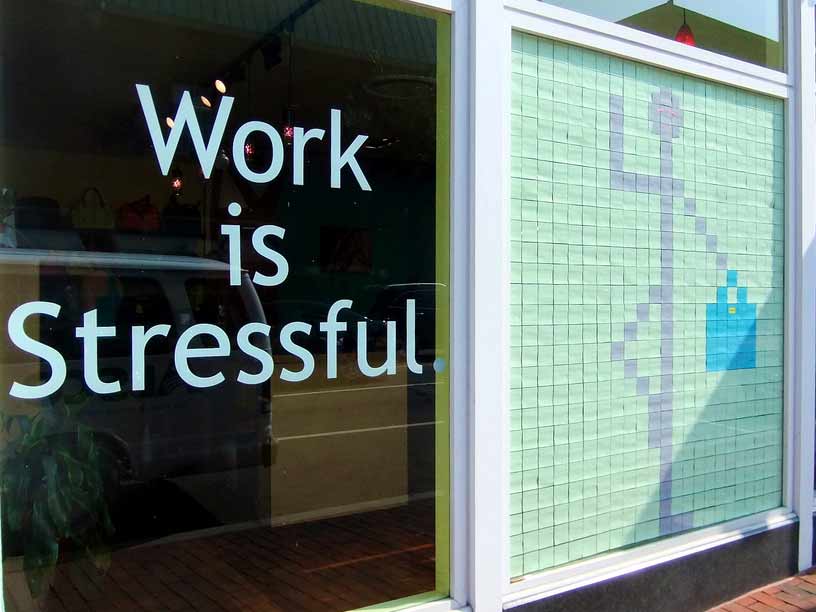
Workplace stress costs companies millions of dollars every year. It leads to higher turnover and absenteeism, increased worker’s compensation and disability payouts, and lower productivity.
Additionally, stress is toxic for the Employee Experience.
If you want to succeed in today’s business environment, especially with the stress surrounding COVID-19, you must consider the mental health of your employees.
As you strive for a less stressful work environment, consider the following 10 sources of workplace stress, as determined by the Global Business and Economic Roundtable on Addiction and Mental Health. These are more important than ever given the new stresses from COVID-19.
10 Sources of Workplace Stress That Impact Employee Experience
- The treadmill syndrome. Too much to do at once, requiring the 24-hour workday. This is especially relevant when employees are working from home and the distance between work day and personal life are blurred.
- Random interruptions. Slack, Zoom and Teams are great and vital for getting work done these days, but they also allow for easy interruptions and instant meetings. Make sure you are allowing your employees the time for deep work.
- Doubt. Employees aren’t sure what is happening, where things are headed. With uncertainly due to COVID-19, leadership needs to communicate more than ever before.
- Mistrust. Vicious office politics disrupt positive behavior. Just because people are not in the office, does not mean politics do not happen. They may be even more destructive given the misinterpretations that can occur with online communication.
- Unclear company direction and policies. Another item that communication from leadership can address.
- Career and job ambiguity. When face-to-face meetings are rare or impossible, continuing to have one-on-one meetings that address specific job responsibilities and career goals is vital.
- Inconsistent performance management processes. Similar to the previous item, it’s important to have performance reviews when working remotely.
- Being unappreciated. This is a universal stressor, COVID-19 or not. Make sure you are taking the time to recognize people during this time. A quick thank you or shout out during a company meeting (even on Zoom) goes a long way!
- Lack of two-way communication. This is always a big source of stress and with COVID-19, it’s important to have one-on-one meetings even if the office is remote.
- Lack of control. The feeling that they have little control over their contributions or the outcome of the work. This is another difficult one that is likely exacerbated with remote work due to COVID-19.
It’s more important than ever to listen to your employees. Knowledge is the strongest weapon against stress, especially these days. If you understand how your employees feel, you can adjust your approach to reduce their stress. It is advisable that employers track the Employee Experience to maximize productivity.
By tracking the Employee Experience, you can learn how even small changes in the working environment can help your employees conquer their stress, which will be greatly appreciated by your people during this uncertain time!
Image Credit: Work is Stressful, Yoga Helps by Ted Eytan, CC BY-SA 2.0
Want more? Check out these related posts!
- INFOGRAPHIC | Employee Experience in a COVID-19 World
-
Customer Experience Strategies: The Impact of Working Together
-
14% of Zappos Staff Quits (Which is Just Fine for Employee Engagement)
|
Less stress. Happier employees. Contact PeopleMetrics: |
About the Author
Sean McDade, PhD is the author of Listen or Die: 40 Lessons That Turn Customer Feedback Into Gold. He founded PeopleMetrics in 2001 and is the architect of the company’s customer experience management (CEM) software platform. As CEO, he guides the company’s vision and strategy. Sean has over 20 years of experience helping companies measure and improve the customer experience. Earlier in his career, he spent five years at the Gallup Organization, where he was the practice leader of their consulting division. His company offers CEM software with advanced machine learning solutions and hands-on analytical support to help companies make sense of their CX data. Sean holds a Ph.D. in Business Administration with a specialization in marketing science from Temple University in Philadelphia. He has published eight articles in peer-reviewed scholarly journals and has taught over 25 marketing classes. Sean was named a 40 under 40 award recipient of the Philadelphia region. He is an active Angel Investor, including investments in Tender Greens, CloudMine and Sidecar.
Topic: Employee Experience





